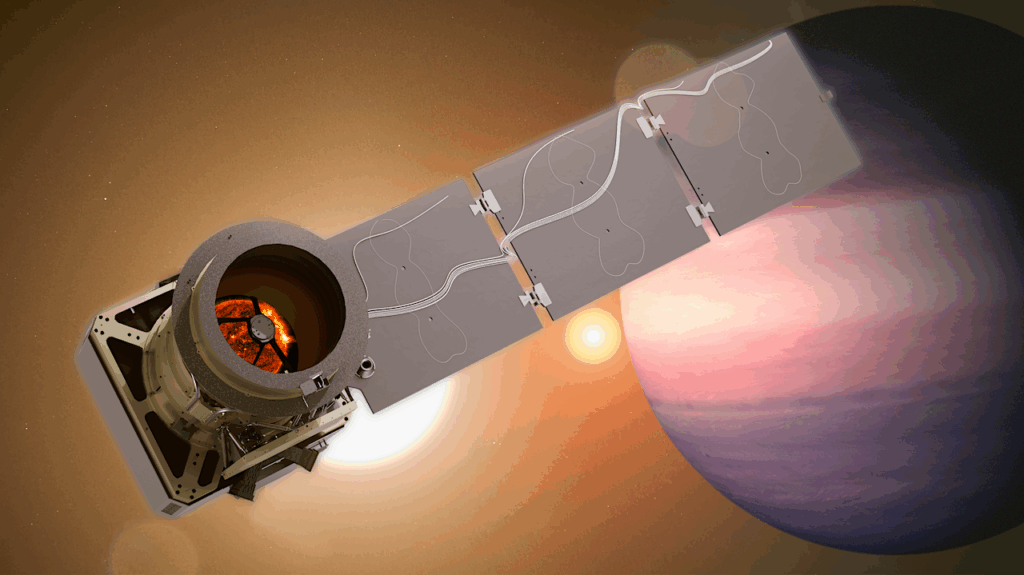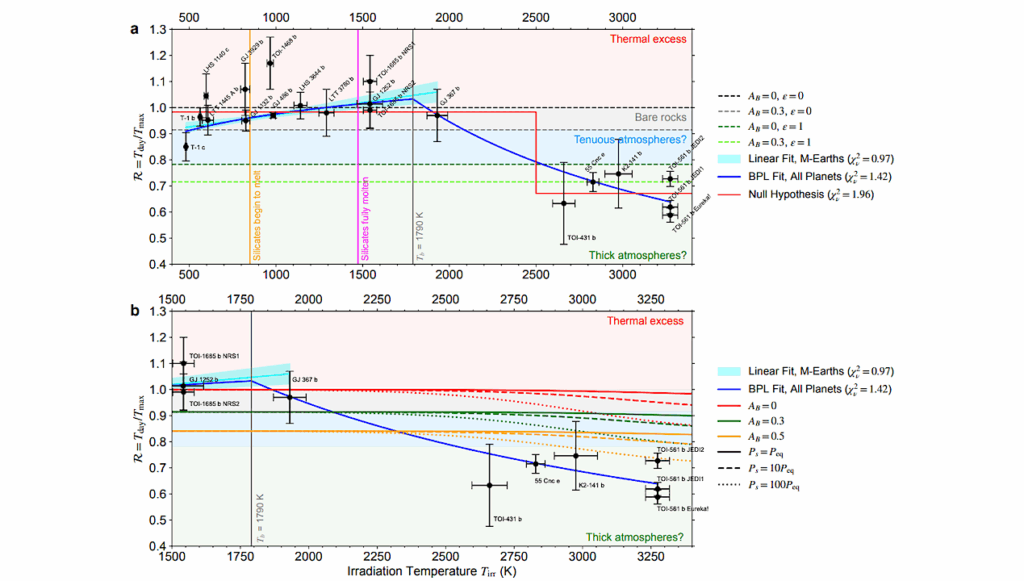Searching for Signs of Intelligent Life: Technosignatures

Our first confirmed proof of life beyond Earth might not involve biology at all. It’s possible that we might intercept communication through electromagnetic waves, like radio, or find telescopic evidence of epic engineering.
While the search remains largely focused on non-technological life, NASA scientists also have begun to consider what technological traces of intelligent life – “technosignatures” – might look like. They wouldn’t come from planets in our solar system, but rather far-flung exoplanets that we cannot see up close. Among the possibilities are laser or radio pulses, signs of artificial chemicals in the atmospheres of distant planets, or “Dyson spheres” – massive structures built around stars to collect their energy.
And as acceptance in the scientific community slowly grows, a field once derided as a search for “little green men” is showing early signs of blossoming into a mature, serious investigation.
“That’s something we’ve worked very hard on: to establish our legitimacy, and distance ourselves from pseudo-science,” said Jill Tarter, an astronomer known for decades as a leader in the search for intelligent life beyond Earth. “If anything, my conviction that this is an important and reasonable thing to do has increased.”
Tarter is the co-founder and former director of the Center for SETI (Search for Extraterrestrial Intelligence) Research at the SETI Institute, as well as the inspiration for the main character in Carl Sagan’s 1985 novel “Contact.” She says one of the biggest challenges today is moving the search for signs of technology beyond just radio signals.
“We still want to look at all the sky all the time, at all wavelengths,” Tarter said, including pulses of laser light that might be used for communication.
Another challenge is short-lived “transient” signals, one-time events that can be bright and energetic. Mixed among the many natural sources for such signals, like gamma-ray bursts or supernovae, might be artificial transients from distant civilizations – an engineered signal lasting less than a few minutes. But teasing them apart likely would require enormous amounts of computer time.
“We’re trying to figure out how to do that,” Tarter said. “That is our focus now.”
Artificial intelligence could prove an ally in such searches. Sophisticated algorithms can sort through large amounts of data for patterns that could indicate an engineered signal. And AI searches likely would have fewer of the possible biases of human analysts, who might tend to focus their search on types of signals they’ve defined in advance, or view as more likely.
Stretching boundaries in the search for technosignatures is a high priority for Ravi Kopparapu, a researcher at NASA’s Goddard Space Flight Center in Greenbelt, Maryland, who specializes in the hunt for habitable worlds as well as technosignatures.
He, like Tarter, seeks to define potential signals beyond the radio realm.

Infographic: NASA/JPL-Caltech/Lizbeth B. De La Torre
In published work, Kopparapu has explored using “nitrogen dioxide pollution as a signature for technology,” he said. After all, Earth’s pollution levels reflect human activity. Satellites monitoring our own planet have observed changes, too – for example, a temporary dip in such pollution around urban centers during COVID-19 lockdowns.
“I thought, OK, can we use that as a signature of technology another civilization might be using?” he said.
Carbon is the fourth most abundant element in the observable universe, and is relatively reactive, making it a natural candidate for involvement in synthetic reactions that any life-form might use. Carbon has formed the basis of life and many technologies on Earth.
“We should expect similar things to happen on other planets,” Kopparapu said. “They should be having the same elements we have here; then they could have carbon-based life, carbon-based technology, and fossil fuel technology as well.”
Another clearly artificial chemical would be chlorofluorocarbons, or CFCs, once heavily used as refrigerants here on Earth. Highly damaging to the planet’s protective ozone layer, they were phased out after the Montreal Protocol agreement in the late 1980s. Detection of the chemical in the atmospheres of exoplanets – planets around other stars – might be possible under some conditions, Kopparapu said.
And another phenomenon sometimes considered a form of “pollution,” at least by astronomers, is artificial light. Though difficult to observe, capturing the glimmer of “city lights” on the night side of a rocky, Earth-sized planet would be a clear sign of at least moderately advanced technology.
One speculative product of a super-advanced civilization could be “Dyson spheres” – megastructures around other stars, as outlined decades ago by the late physicist Freeman Dyson. A hypothetical structure could partially block the light from, say, a mature, Sun-like star, as it gathers the star’s energy. A Dyson sphere’s presence would be revealed by “waste heat” – observed as excess infrared radiation.
“If the technology is using lots of solar energy, giant solar panels in space blocking 1% of the star’s light, there will be a huge, whopping infrared signature,” said Jason Wright, an astronomy and astrophysics professor at Penn State who works on a variety of problems involving stars, planets and the potential for life in the universe.
Infrared radiation is usually associated with young stars, surrounded by dusty disks where planets are forming. The disks absorb the starlight and emit an excess of telltale infrared light.
“An old star like the Sun doesn’t have any right having that much [infrared] emission coming off it,” Wright said.
Investigations of these and other potential technosignatures have begun to proliferate, prompting some NASA astrophysicists to conduct a survey of such efforts – and to identify the technologies the investigators might require.
Nick Siegler, chief technologist for the Exoplanet Exploration Program at NASA’s Jet Propulsion Laboratory in Southern California, and his team have so far catalogued more than 40 technosignature investigations by scientists in related fields.
The investigations run from the familiar to the exotic. That includes well-known searches for radio signals as well as novel approaches: looking for strange gamma-ray emissions that might indicate highly advanced propulsion systems, or light signatures of large, obviously artificial structures passing in front of – “transiting” – their stars.
“Imagine that some ETs, for not a huge price, built a massive triangle,” Siegler said. “Those don’t naturally appear in the cosmos. The light curve [measurements of the star’s brightness over time] of a massive, transiting triangle doesn’t look like a disk.”
He sees the renewed focus on technosignatures as a natural outgrowth of NASA’s broader search for life beyond Earth. And he says technosignatures, defined as evidence of advanced life, are a subset of biosignatures – evidence of all biological life, including microorganisms.
“NASA is fully committed to the search for life being one of its key science goals,” Siegler said. “Technosignatures will be part of the continuum of evidence of life we will search for on exoplanets.”
Tarter was, in fact, the project scientist for NASA’s former SETI Microwave Observing Project and High Resolution Microwave Survey from 1989 to 1993. But NASA’s recent, more visible involvement in technosignature searches began with a workshop in Houston in 2018. The organizer, exoplanet researcher Dawn Gelino, says both the number and membership of technosignature working groups have grown since then. And several agency research programs have begun to allow technosignature proposals.
Gelino is deputy director of the NASA Exoplanet Science Institute, and also a co-lead for NASA’s Nexus for Exoplanetary System Science (NExSS) research coordination network. She says NExSS’ technosignatures working group is planning a webinar on the topic in summer 2023. NExSS also supported the NASA-sponsored “Technoclimes” online workshop in 2020 to develop a research agenda for non-radio technosignatures.
More workshops by privately funded groups also are being added to the mix.
“We have to show everyone that technosignatures is a real field of study – quantitative, hard science – and needs funding in order to be able to grow and be part of the whole exoplanet ecosystem,” Gelino said.
One way to grow technosignature studies, Tarter, Siegler and other scientists say, is to “piggyback” on studies of exoplanets and other cosmic phenomena. If a space telescope is already looking at a star for other reasons, the same data can be examined for signs of technosignatures. That would help contain costs while widening the aperture in the search for signs of technological civilizations.
And seeking technosignatures in data beyond radio – chemistry, for example, or patterns in absorption and emission of energy – also could broaden the scientific basis of technosignature investigations.
“It’s a really exciting time to be in the search,” said Wright, the Penn State researcher. “I think we have a real shot if something’s out there.”
Astrobiology, SETI,








